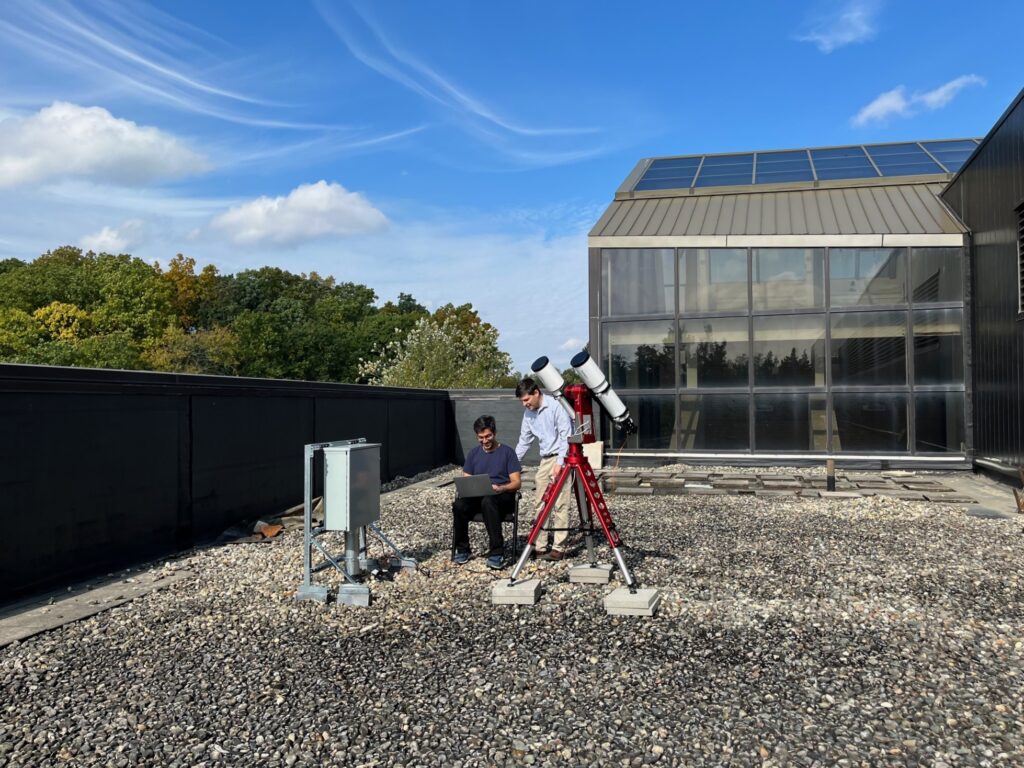
Professor Limbach Selected for NASA Supersonic LIDAR Project
Michigan Aerospace Professor Chris Limbach begins study of airborne atmospheric LIDAR aboard shape-morphing supersonic aircraft

Michigan Aerospace Professor Chris Limbach begins study of airborne atmospheric LIDAR aboard shape-morphing supersonic aircraft
Supersonic flight, the dream of streaking across the skies at breathtaking speeds, has always been hampered by something known as the sonic boom. The thunderous clap that accompanies an aircraft exceeding the sound barrier, sonic boom has so far limited supersonic travel to military jets and a few iconic passenger planes like the Concorde. However, a new era of commercial supersonic flight may be on the horizon. In an upcoming research project, Michigan Aerospace Engineering Professor Christopher Limbach will lead a LIght Detection And Ranging (LIDAR) sensing and instrumentation subteam and work closely with NASA and collaborators to examine designs for airborne LIDARs that can help tame and control this sonic boom.
LIDAR can be used for various purposes such as mapping terrain and controlling autonomous vehicles. In this study, Professor Limbach’s group will evaluate onboard LIDAR systems capable of measuring the air temperature, humidity, and wind velocity below and ahead of the flight path. This type of measurement, known as atmospheric LIDAR, relies on scattering of light by air molecules and aerosols to produce a return signal.
Limbach explains, “The LIDAR in this work is fundamentally different from what is found in self-driving cars. We are not measuring the distance to an object, but rather analyzing laser light scattered by the atmosphere to determine temperature, velocity, and even water vapor content below the supersonic aircraft. All of these factors can influence the sonic boom heard on the ground.”

The goal of the project, entitled “Supersonic Flight Test Design Study and Planning for Adaptive Geometries and LIDAR,” is to integrate materials that can change the vehicle’s shape with atmospheric data from LIDAR to help balance aerodynamic performance, vehicle efficiency, and boom signature in real time in response to atmospheric changes. In this project, Limbach and the LIDAR team will work closely with Principal Investigator Dimitris Lagoudas at Texas A&M University, other team members, and NASA technical experts to evaluate an array of LIDAR sensing approaches. This includes technology– developed by the Limbach group under a predecessor NASA project– that uses specialized atomic vapor filters to improve the LIDAR sensitivity to wind speed.
Limbach goes on to say, “This project presents an exciting opportunity to look at integrating a LIDAR into a supersonic flight platform. I’m particularly interested to see how the real-time measurements can contribute to aircraft control and balancing performance with sonic boom. It’s a problem that has not been adequately addressed but will be essential to planning over land supersonic travel.”
The assembled team has identified critical tasks leading toward the completion of the mission concept review (MCR) and systems requirements review (SRR). The team will identify system-level LIDAR integration challenges for both Boeing N+2 commercial vehicle concept and for a potential flight test vehicle. Furthermore, they will evaluate unique risks to supersonic LIDAR, especially those posed by the aero-optic distortion and changes in pressure and temperature that occur in supersonic flight.
During the research and development of this project, skilled undergraduate and graduate students will be assigned specific tasks, similar to an industrial approach. This will involve students as an “engineers in training” model. Professor Limbach is also on track to conduct micropulse LIDAR measurements from the roof of the François-Xavier Bagnoud (FXB) building to support his involvement in this project and assist in future studies at the University. This will provide a hands-on experience for select students to learn about LIDAR sensing of the atmosphere and flight environment.

While the solution to quiet supersonic flight has so far proved elusive, the introduction of new approaches and data from LIDAR sensors can help usher in an era of quieter supersonic travel sooner than we think. In the near term, the team is hoping this design study can pave the way for the first-ever flight test of an airborne LIDAR at supersonic speeds.